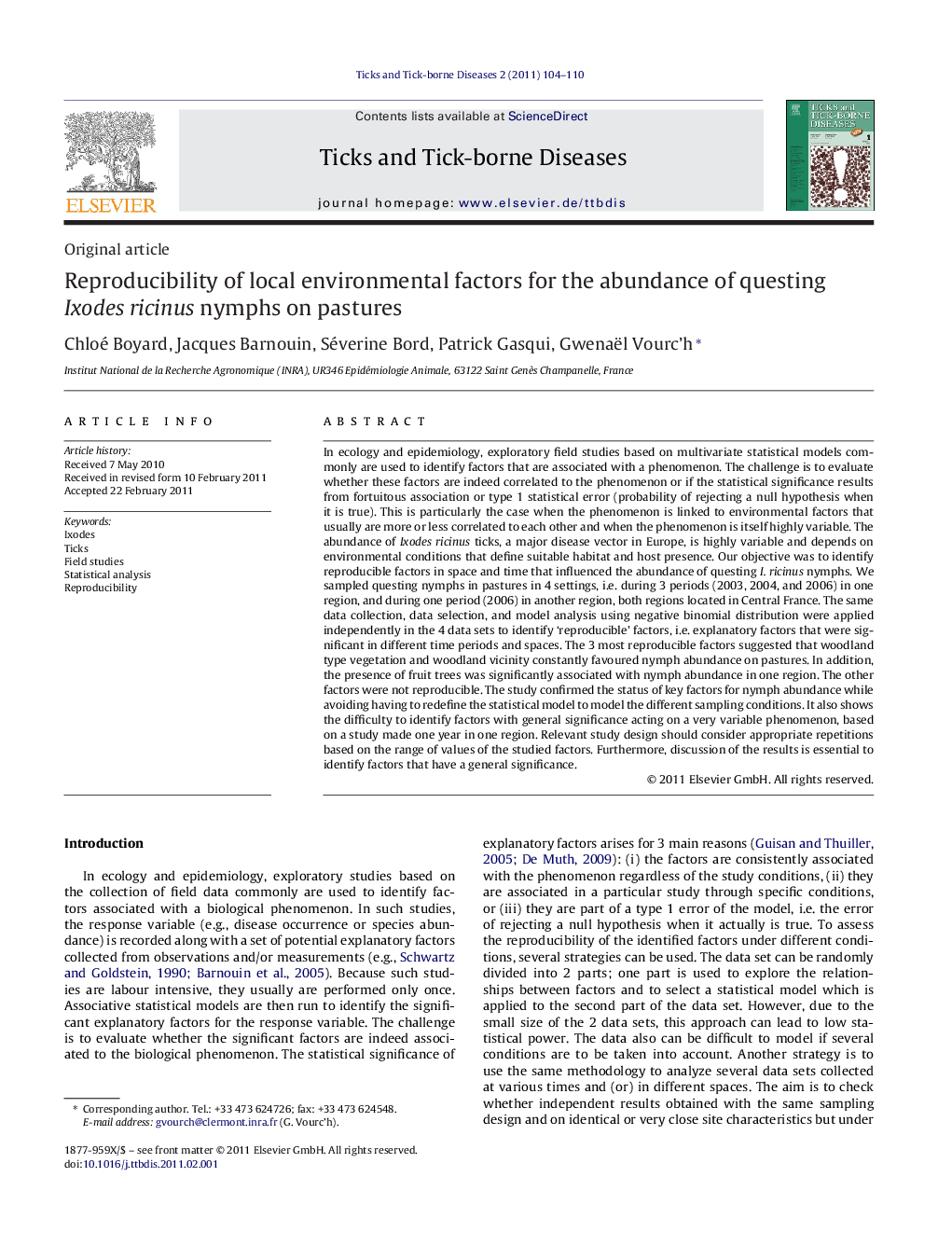| کد مقاله | کد نشریه | سال انتشار | مقاله انگلیسی | نسخه تمام متن |
|---|---|---|---|---|
| 2474068 | 1113112 | 2011 | 7 صفحه PDF | دانلود رایگان |

In ecology and epidemiology, exploratory field studies based on multivariate statistical models commonly are used to identify factors that are associated with a phenomenon. The challenge is to evaluate whether these factors are indeed correlated to the phenomenon or if the statistical significance results from fortuitous association or type 1 statistical error (probability of rejecting a null hypothesis when it is true). This is particularly the case when the phenomenon is linked to environmental factors that usually are more or less correlated to each other and when the phenomenon is itself highly variable. The abundance of Ixodes ricinus ticks, a major disease vector in Europe, is highly variable and depends on environmental conditions that define suitable habitat and host presence. Our objective was to identify reproducible factors in space and time that influenced the abundance of questing I. ricinus nymphs. We sampled questing nymphs in pastures in 4 settings, i.e. during 3 periods (2003, 2004, and 2006) in one region, and during one period (2006) in another region, both regions located in Central France. The same data collection, data selection, and model analysis using negative binomial distribution were applied independently in the 4 data sets to identify ‘reproducible’ factors, i.e. explanatory factors that were significant in different time periods and spaces. The 3 most reproducible factors suggested that woodland type vegetation and woodland vicinity constantly favoured nymph abundance on pastures. In addition, the presence of fruit trees was significantly associated with nymph abundance in one region. The other factors were not reproducible. The study confirmed the status of key factors for nymph abundance while avoiding having to redefine the statistical model to model the different sampling conditions. It also shows the difficulty to identify factors with general significance acting on a very variable phenomenon, based on a study made one year in one region. Relevant study design should consider appropriate repetitions based on the range of values of the studied factors. Furthermore, discussion of the results is essential to identify factors that have a general significance.
Journal: Ticks and Tick-borne Diseases - Volume 2, Issue 2, June 2011, Pages 104–110